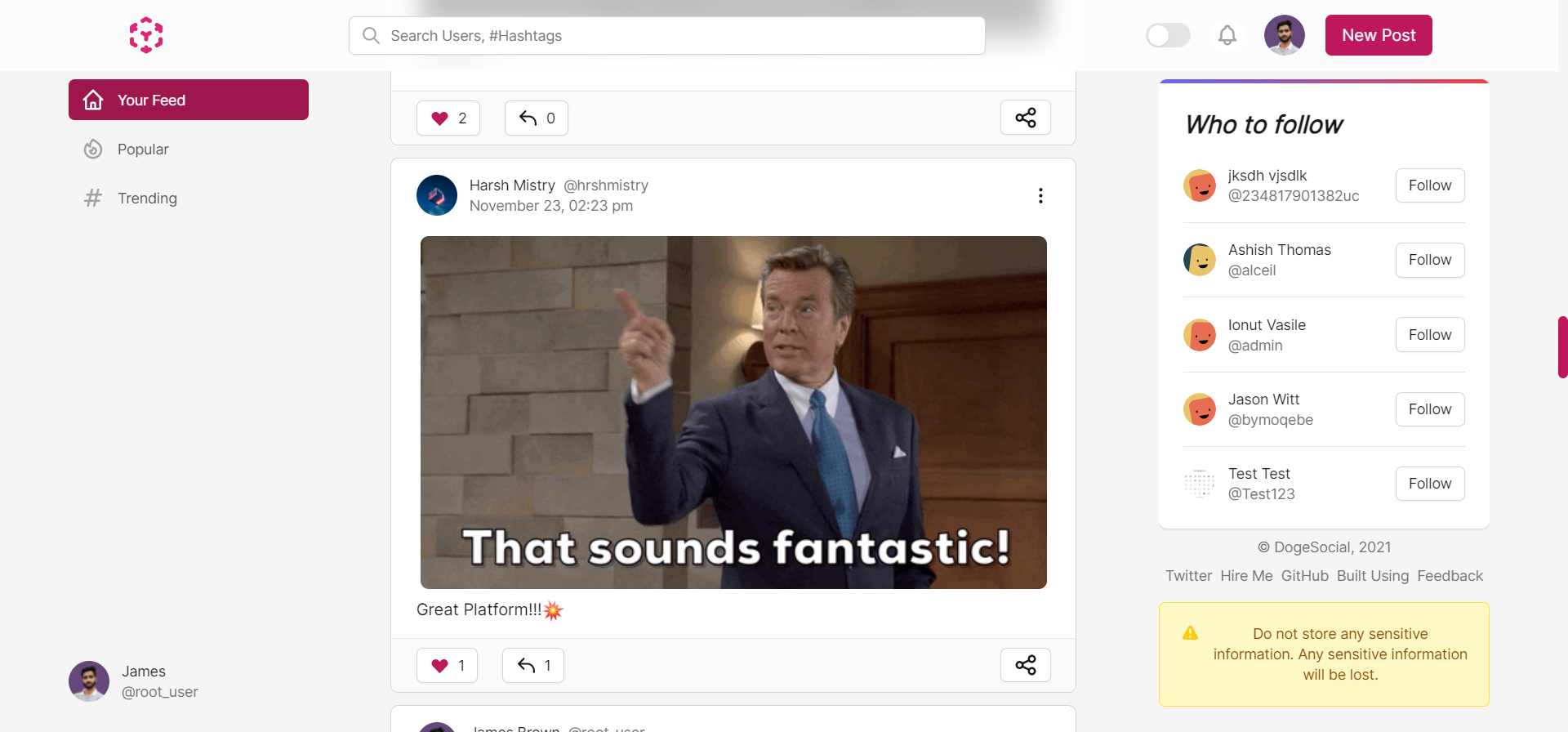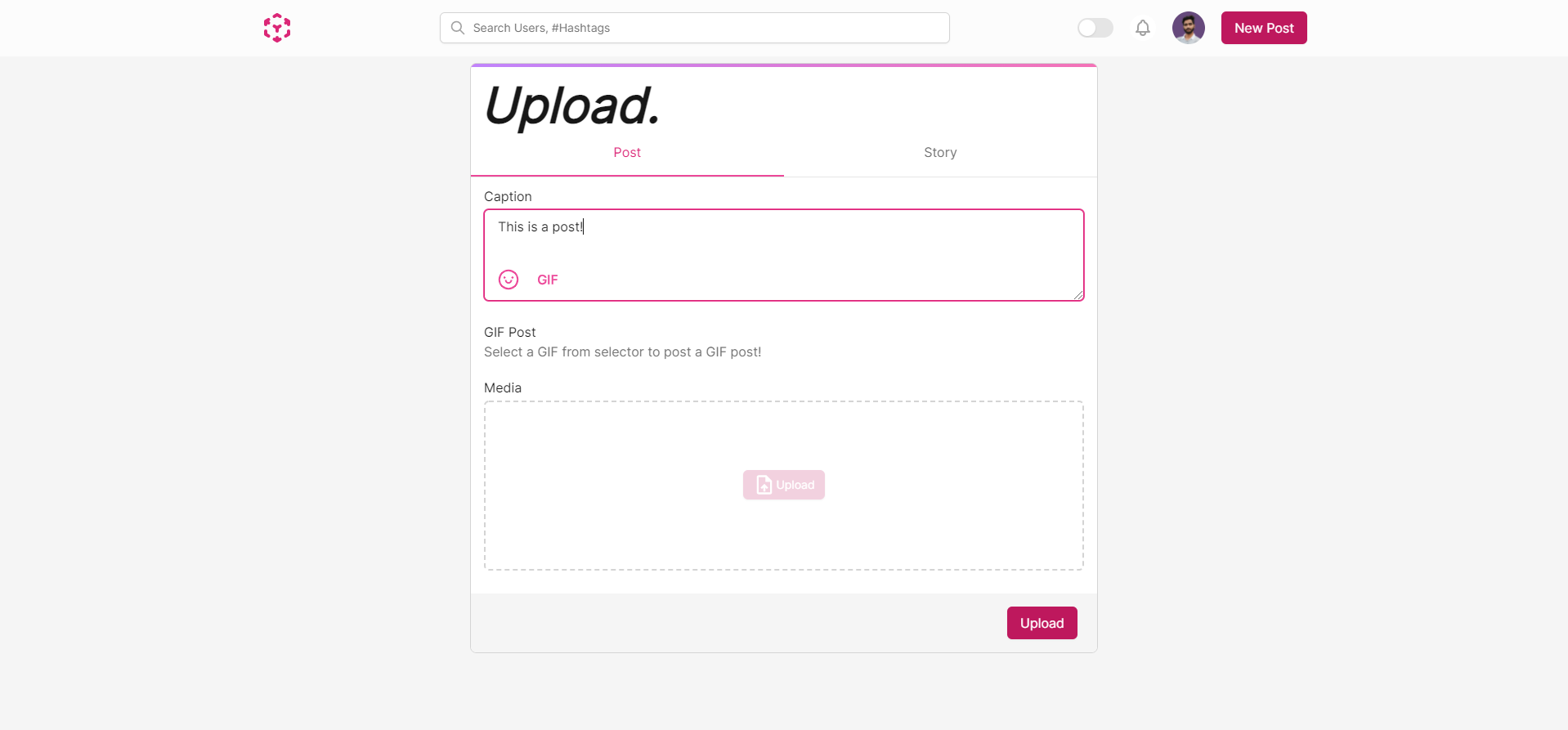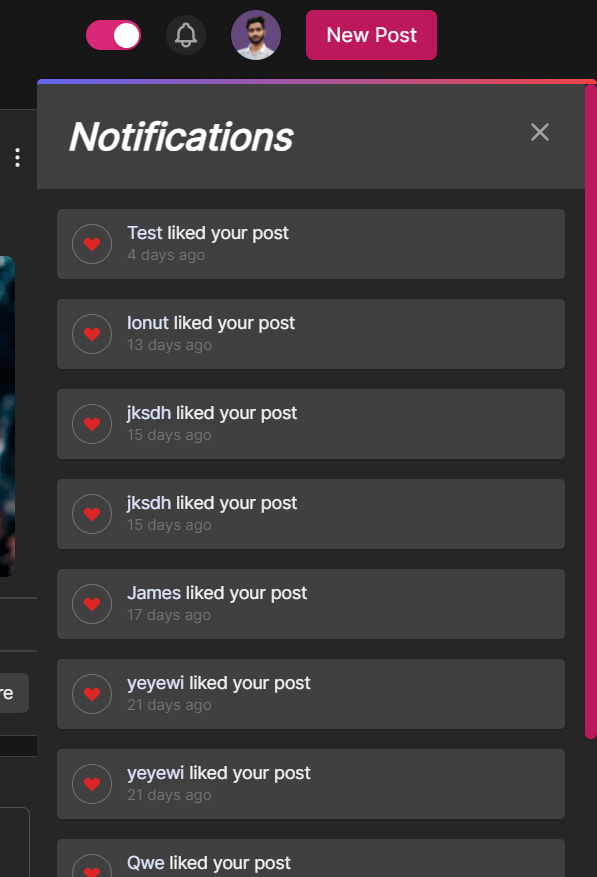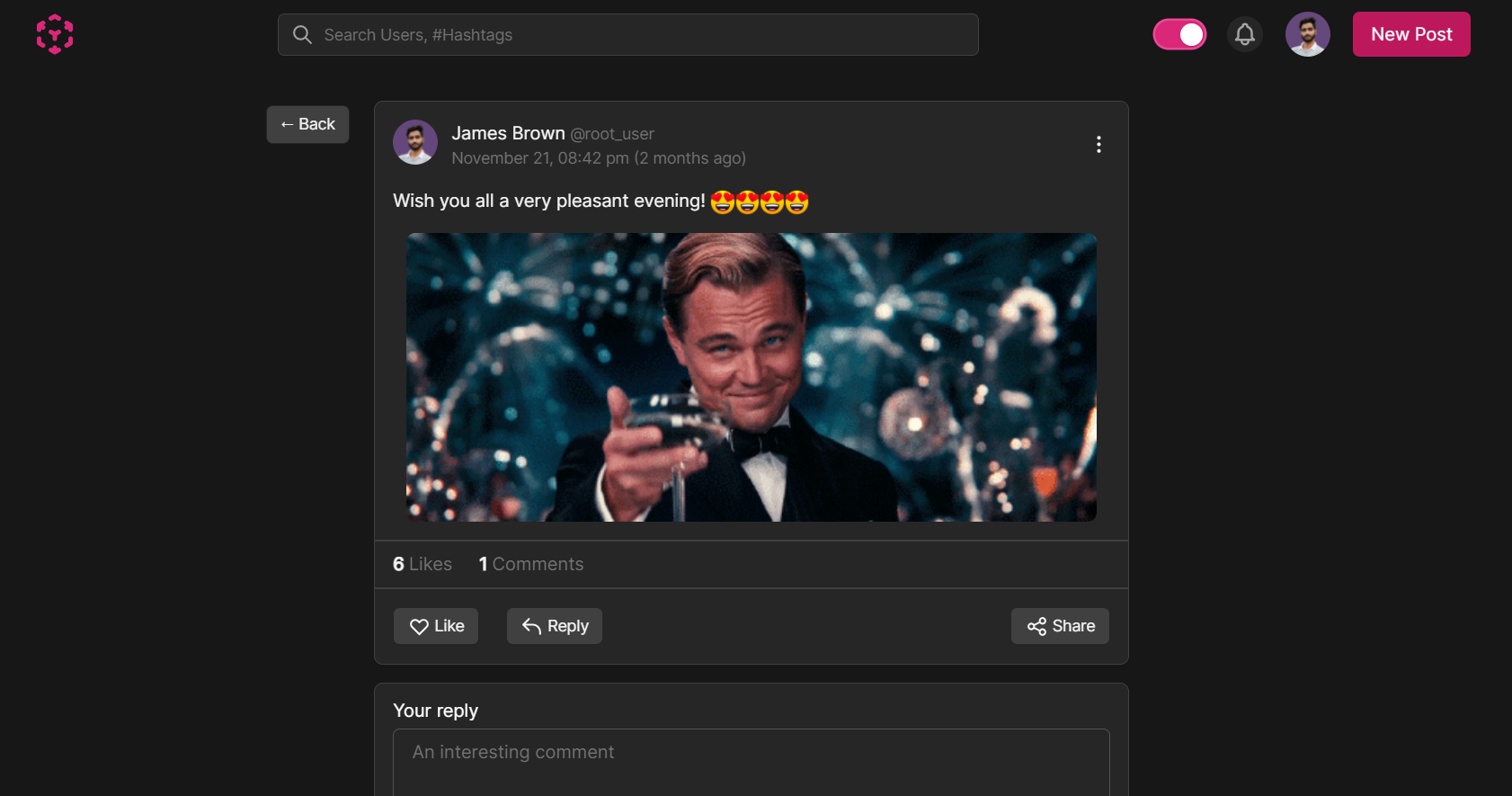DogeSocial
DogeSocial is a social media platform to see and share posts. See what your friends are upto and share the world's moment with all!
Omkar Kulkarni / Nov-2021
4 min read • 641 characters
Short Explanation
DogeSocial is a social media platform to see and share posts. You can follow real people, connect with real people, share what's on your mind and more. You can explore trending posts, trending hashtags and more. DogeSocial supports media uploads, a full fledgeed emoji picker and a GIF picker :)
Project Features
- Infinite Scroll for posts, comments and hashtags.
- Search for posts, comments and hashtags.
- Upload GIF posts, text posts, or images.
- Create/Upload/Edit/Delete Posts
- Reply and ability to edit own comments under a post
- Mention other users in post captions, use hashtags, post links. These things are parsed and highlighted.
- Notification when someone follows you/likes your post/or replies to your post
- Emoji Picker and GIF Picker for Posts
- Dark Mode
- See trending hashtags
- Search other users, search posts by hashtags,
- Follow/Unfollow other users
Tech Stack Used:
This project is built with Next.js. I used this project as a way to learn about GraphQL awesomeness. The backend API is a Apollo-Express GraphQL server. Both backend and frontend are written in Typescript. The database used is PostgreSQL with Prisma.
For data fetching on the frontend, I used Apollo Client. It supports SSR so that you get awesome performance, and great SEO! Apollo Client also supports relay style pagination.
I chose tailwindCSS to build the UI. I abstracted atomic components like buttons, inputs.
All image uploads are done through Cloudinary Node.JS SDK. It's a cloud image hosting service. Cloudinary provides around 25GB storage bandwidth every month.
All queries are written in a GraphQL framework GiraphQL. It makes writing GraphQL queries a breeze. GiraphQL works well with Prisma and comes with out of the box support for stuff like Auth Scopes, Prisma integration and much more.
The relay team at Meta has made a pagination spec that defines data as Nodes and Edges. A typical GraphQL query looks like this:
graphqlquery {
allPosts(first: 10, after: "cursor") {
edges {
node {
id
... on Post {
title
body
}
}
}
}
}
In the query, the connection model provides a standard mechanism for slicing and paginating the result set.
In the response, the connection model provides a standard way of providing cursors, and a way of telling the client when more results are available. You can read more about it here.
Tech Stack Summarised:
- Next.JS
- TypeScript
- Apollo GraphQL (Server and Client)
- PostgreSQL
- Node.JS
- TailwindCSS
- Cloudinary
Screenshots (click to enlarge)
Key Learnings
-
Learnt about GraphQL. I was a little confused at first, but I was able to get a good grasp of it. Not every page needs complete user data. With GraphQL you can only fetch what you want, you can even convert it into reusable fragments. This is a great way to keep your queries clean and readable.
-
Used PostgreSQL for the first time. I am personally biased towards using SQL. Data is always connected with each other. While I had DBMS subject during my CS Degree studies, being able to use the DBMS knowledge and apply it in a real world app was an amazing experience.
Try it!
Miscellanous
DogeSocial recieved amazing response from everyone. The launch day saw around 80+ real user signups. It is one of my projects which took a lot of time to build.



